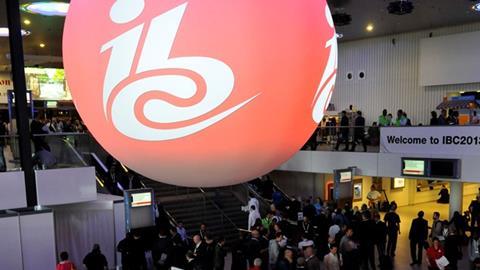While IBC is usually associated with the birth of new technology, death is never far away, writes Will Strauss

MANAGE
- CONNECTING
In previous years, we’ve had the demise of film, then tape. We’ve had DSLR killers and then Red killers.
And now, with live production in mind, we could be about to see the death of SDI as studios, facilities and OB firms investigate the use of cheaper and more widely available (but previously less reliable) IP-based networks.
“There will be some serious conversations going on at IBC with CTOs and chief engineers kicking the tyres on current state-of-the-art IP infrastructures and thinking about proofs of concept over the next year and greater production use after that,” says Steve Sharman, chief technology offer at media technology consultant Mediasmiths.
There are various flavours of IP networking, one being audio video bridging (AVB), which has already established a foothold in the audio world, especially for live events. At IBC, Sony (12.A10) will shout about its own developments and how its “IP-based solutions are helping broadcasters deliver accurate multi-camera live productions with unshakable continuity”.
Accuracy is the key. Without it, you cannot synchronise anything – and that just won’t do for live TV.
Sony is showing a new AV-over-IP interface that packages video, audio and metadata, making real-time transmission between equipment possible via standard network infrastructures.
Doubting Thomases will point to the fact that the death of SDI has been talked about for a while. But we do appear to have reached a tipping point.
“I believe the combination of software based products, IP real-time transport replacing SDI and software-based infrastructure – both public and private clouds – are going to radically change how we build and operate broadcast environments going forward,” says Red Bee Media chief technology officer Steve Plunkett.
“At IBC, I am keen to assess the current state of the industry in this regard.”
Not surprisingly, there is a seminar on this subject on the opening day of the show (12 September 2014, 11.30am-1.00pm). Called ‘The death of SDI? The promise of complete IP-based production’, it will feature Sony, BBC R&D, Fox TV and others.
And it’s not just the live arena where SDI is being knocked off its perch.
Consumer connectivity technology HDMI now has timecode and trigger options too, like SDI before it, thanks to external recorder developer Atomos (9.D25).
And now there is an open, free and available standard HDMI protocol that other manufacturers can use too.
This brave new IP world has already permeated other parts of the market, of course, including talkback and comms, where, along with digital wireless, a transformation is occurring.
Clear-Com(10.D29) will have a new version of its integrated or standalone 1.9GHz roaming digital wireless intercom system Freespeak at IBC. Version 2 allows up to 50 people, using full-duplex wireless beltpacks and distributed remote antennas, to roam across a production area at the same time.
IBC will also feature a showcase of LSB’s Virtual Studio Manager working with Gemini, the distributed matrix intercom made by Trilogy Communications (10.A29), thanks to the implementation of the Ember+ protocol.
Mobile newsgathering is another burgeoning area. Dejero (11.C21) is showing its Live+ Booster for the first time.
Designed to improve connections for bonded uplink transmissions, it uses an array of up to 12 high-gain antennas mounted on top of a vehicle. This enables mobile news crews to extend their connection reception during difficult transmission scenarios, such as crowded areas where mobile networks are overloaded, or in low-coverage locations.
In that same arena, TVU’s (2.B28) MLink (above) has been devised for IP-based OBs.
When rack-mounted in a truck, the IP ENG transmitter allows users to aggregate available bandwidth from mobile, Ka-band satellite, Ku-band satellite and microwave links to deliver what TVU describes as a “stable, resilient transmission from practically any location.”
ALSO WORTH SEEING
- LiveU’s DataBridge, a mobile hotspot that offers broadband connectivity in any location by bonding together multiple cellular and other data connections (2.B28).
- The Camera Tote system from Joseph Fiber Solutions, a new option for point-topoint communications built into an industry- standard Pelican enclosure (3.B62).
- Tango, a currently secret but “entirely new intercom solution” from Riedel (10.A31).
- POST-PRODUCTION
Visitors hoping for excitement in the world of graphics, effects, grading and editing might be disappointed at IBC this year, according to Envy Post Production head of technical operations Daniel Sassen.
“It doesn’t feel like there’s going to be a ground-breaking announcement causing a stir,” he says. “There’s going to be more and more 4K announcements from manufacturers not previously doing this. We are looking at the whole 4K pipeline, from acquisition and processing to monitoring.”
That said, IBC will be a good opportunity to check out Avid’s (7.J20) Media Composer version 8.1, which includes a number of new time-saving tools.
The update allows users to work with footage from Arri Amira cameras, viewing and editing directly in Media Composer without transcoding, with any colour transformations embedded as a Colour Decision List (CDL) and/or a 3D Look-up Table (LUT) applied automatically.
It is also possible to read and write DPX files without the need for transcoding.
Quantel(7.A20) has new post-production kit to show at IBC with Genetic Engineering 2 making its European debut.
A shared-storage technology, it works with the Quantel Pablo Rio colour and finishing system and “proved itself” at the World Cup, where it was used to produce 4K 60p highlights packages for Sony and Fifa.
The sixth new software release this year for Pablo Rio will also be showcased.
As far as other demands are concerned, remote working will be popular.
“We’re very focused on overcoming the challenge of remote ingest of files: enabling clients to deliver rushes back to our platform wherever they may be,” says Dock 10 chief technology officer Paul Clennell.
“I hope to find some cost-effective wireless solutions that allow us to combine connectivity with our ingest workstations.”
ALSO WORTH SEEING
- Star Wars: Episode VII editors Maryann Brandon and Mary Jo Markey speak at the Amsterdam Supermeet (The Grand Hotel Krasnapolsky, 14 September). They will also appear on the Avid stand during the show.
- Forbidden Technologies’iOS and Android Forscene apps and the beta version of a new media asset management system (8.B38e).
- A new version of Marquis Broadcast’s Project Parking software that, when combined with a XenData system, allows Avid projects to be easily archived to LTO or Sony ODA cartridges (7.H47and2.A58).
- STORAGE
Storage is not sexy but it does have its place and its challenges.
The new HyperSpace 4K storage accelerator technology from GB Labs (7.J15b) is a case in point.
Using an SSD enhancement technology to speed up the Space tier 1 HDD NAS system, it effectively provides users with the capacity of the HDD range and the ultra-high data rates of the company’s SSD range, but for less money.
GB Labs sales and marketing director Ben Pearce says: “The random-access capabilities of Hyper- Space are ideally suited to deployments that require DPX image sequence capabilities or very large HD stream counts for concurrent editing, transcoding and rendering.”
StorNext Connect will be a big thing for Quantum (7.B26) at IBC.
This innovation provides a way to monitor and manage StorNext storage deployments, allowing users to install software, upgrade clients and servers, check the status on automated tasks and troubleshoot performance issues using real-time data.
Another interesting innovation on this theme is Cambridge Imaging Systems’ (6.C23) IQ, a unified web platform for production, storage, delivery and archive that combines Quantum’s StorNext Pro Studio storage with the Imagen media management and publishing software.
- TEST AND QC
If ever there were a market to be in right now, it is quality control.
Ahead of the move to fi le-based programme delivery in October, every man and his dog is looking at monitoring and checking – automated or otherwise.
When it comes to loudness management and compliance, Nugen Audio (8.A76) is billing itself as the “go-to company”, according to founder Jon Schorah.
New for 2014 is DPP AS-11 programme compatibility for LMB, the offline fi le-based loudness analysis and correction technology.
A native MXF file-handling option enables LMB to perform automated analysis and correction of audio within an MXF container while preserving all other data within the file.
Similarly, DK-Technologies (8.E60) is offering an upgrade for its DK T7 audio, loudness and logging meter that includes loudness automation.
Offered for free to both existing and future DK T7 users, it is based on SMPTE timecode and allows the DK T7 to instantly recalculate the integrated loudness value over a four-hour period, meaning engineers no longer have to re-run programme material to hit their loudness target value.
IBC will also see the debut of Archimedia Technology’s (7.D14) QuSee Suite, a family of tools for inspecting and measuring video, audio and metadata that works in tandem with the Archimedia Master Player.
It allows users to validate and verify functions from a desktop computer, perform quality control tests on files rather than SDI streams created from fi les, and do away with SDI video and audio waveform monitors, vectorscopes and audio phase meters.
ALSO WORTH SEEING
- TektronixWFM8200 and 8300 waveform monitors, which can now be upgraded to measure 4K and UHD (10.D41).
- TSL Products’ new PAM range that can monitor AVB (audio video bridging) audio (10.B41).
- A new version of Vidcheck that automates the QC process and provides auto corrections (8.A30).
- This feature is taken from the September/October issue of Broadcast TECH




























No comments yet